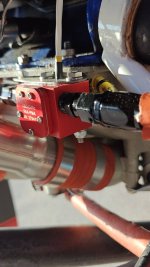Our non-RV plane (DR-107, IO-360) had a failing VM1000 (+ floscan sensor), which we suspected showing too high flow in higher altitudes (cross country flights). The VM1000 started to die on us, so we replaced it with the MGL MX1 + RDAC + red cube. The old installation had two 90 degree turns right before the floscan, so we thought that was the reason for the odd behavior. Now with new sensors and better installation between mechanical pump and servo, we see exactly the same behavior. With new EFIS we can reliably lean based on EGTs and record the data, which shows the following (altitudes are pressure altitudes):
If the "too high" would have not shown in the old Floscan, I would have thought sensor error, but... Reading internet, the bubbles in the fuel would cause too high readings, but why would increasing the pressure make it worse?
Has anyone ever encountered similar? Any help is much appreciated!
- At low altitudes (1000-3000 ft) the consumption is quite accurate with the factory K-factor (shows about 1.5% too much)
- When leaning, the cylinders peak nicely within about 0.2 gal/h.
- The consumption at 2200 ft, 2300/23, at peak EGT, shows about 36 l/h (9.5 gal/h), which is not too far from theoretical
- When leaning at 7200 ft, the "at peak" flow showed 47 l/h
- I suspected that there could have been bubbles and put on the boost pump for the repeat test, the flow showed 58 l/h at peak.
If the "too high" would have not shown in the old Floscan, I would have thought sensor error, but... Reading internet, the bubbles in the fuel would cause too high readings, but why would increasing the pressure make it worse?
Has anyone ever encountered similar? Any help is much appreciated!






